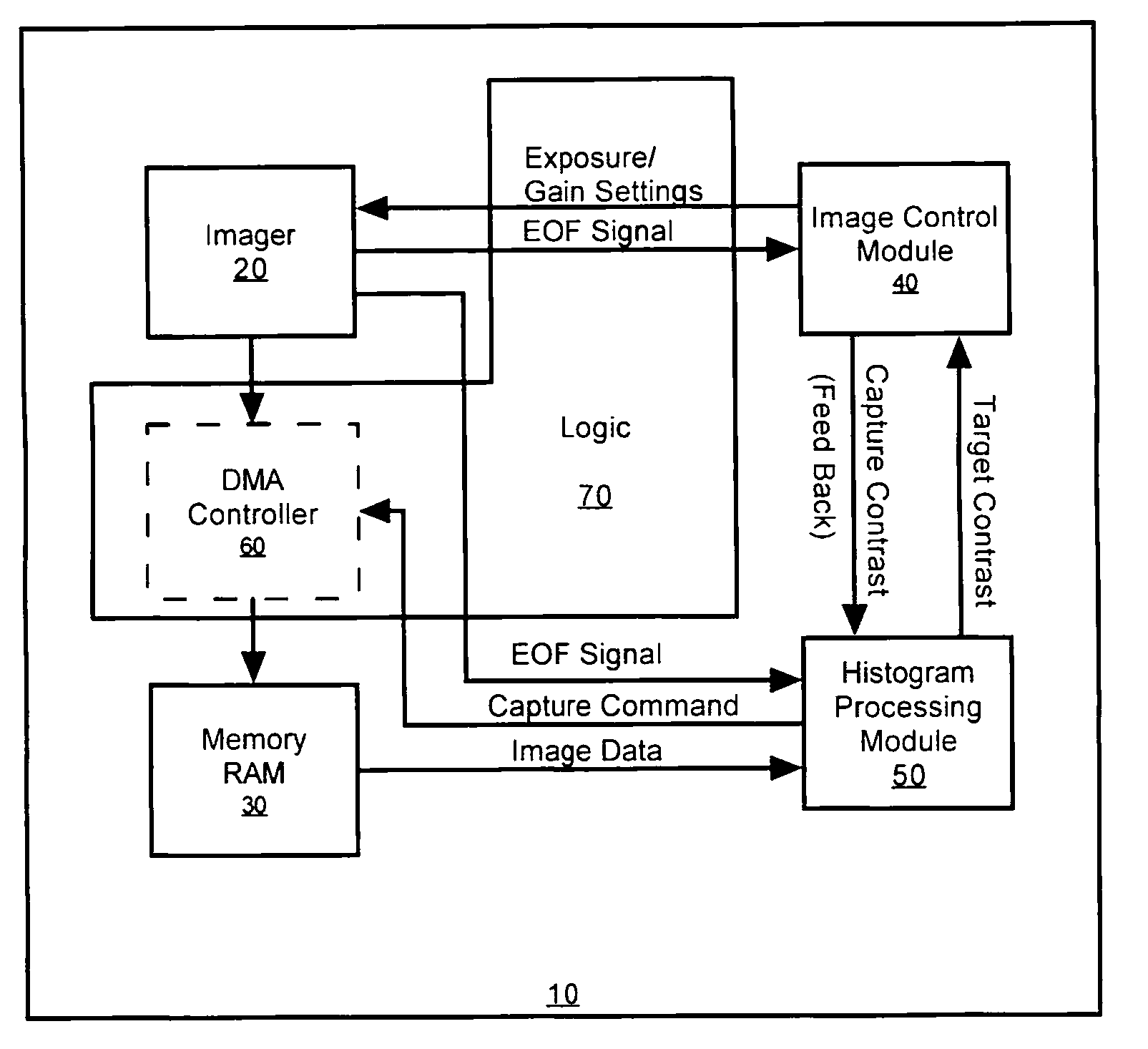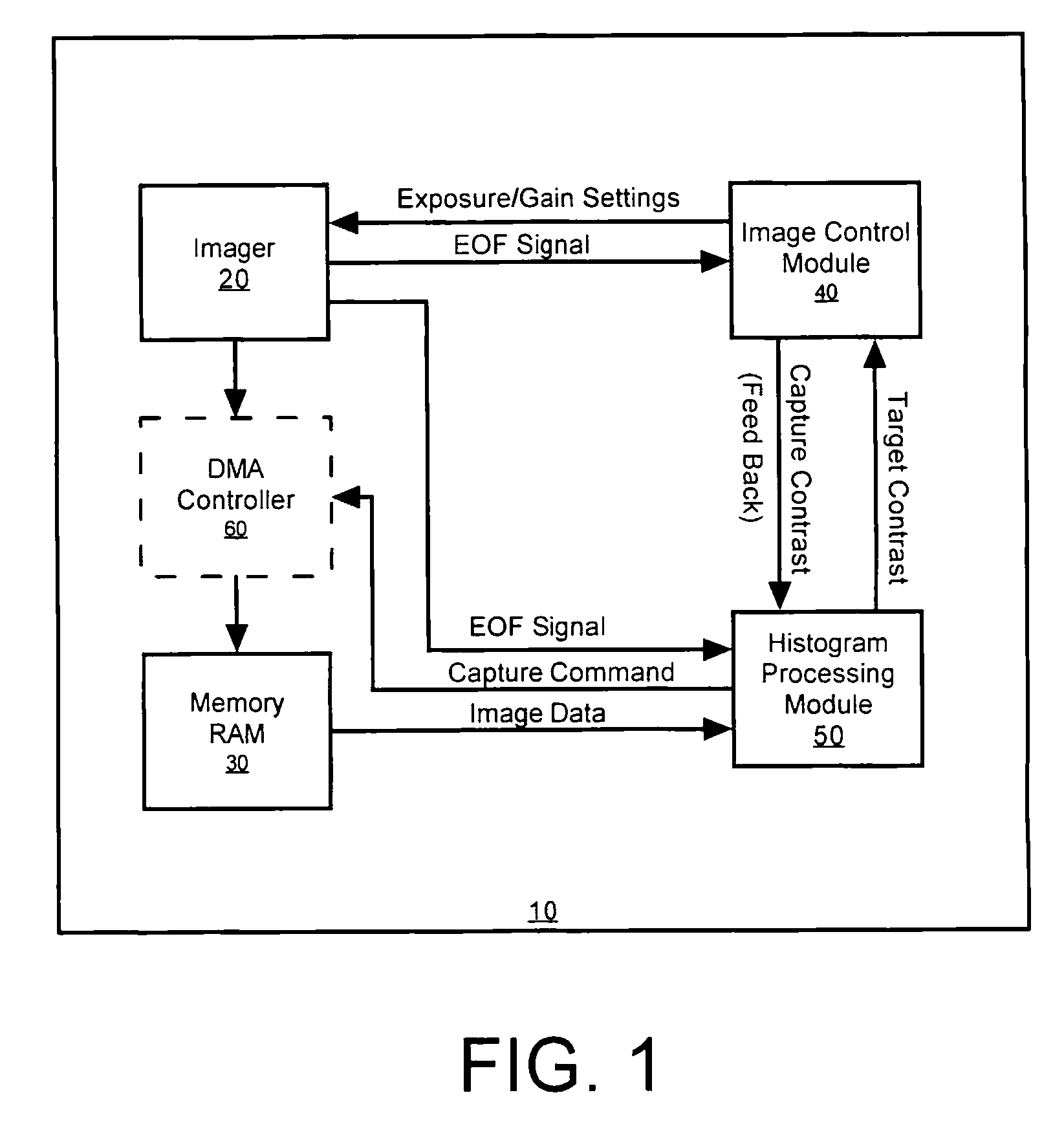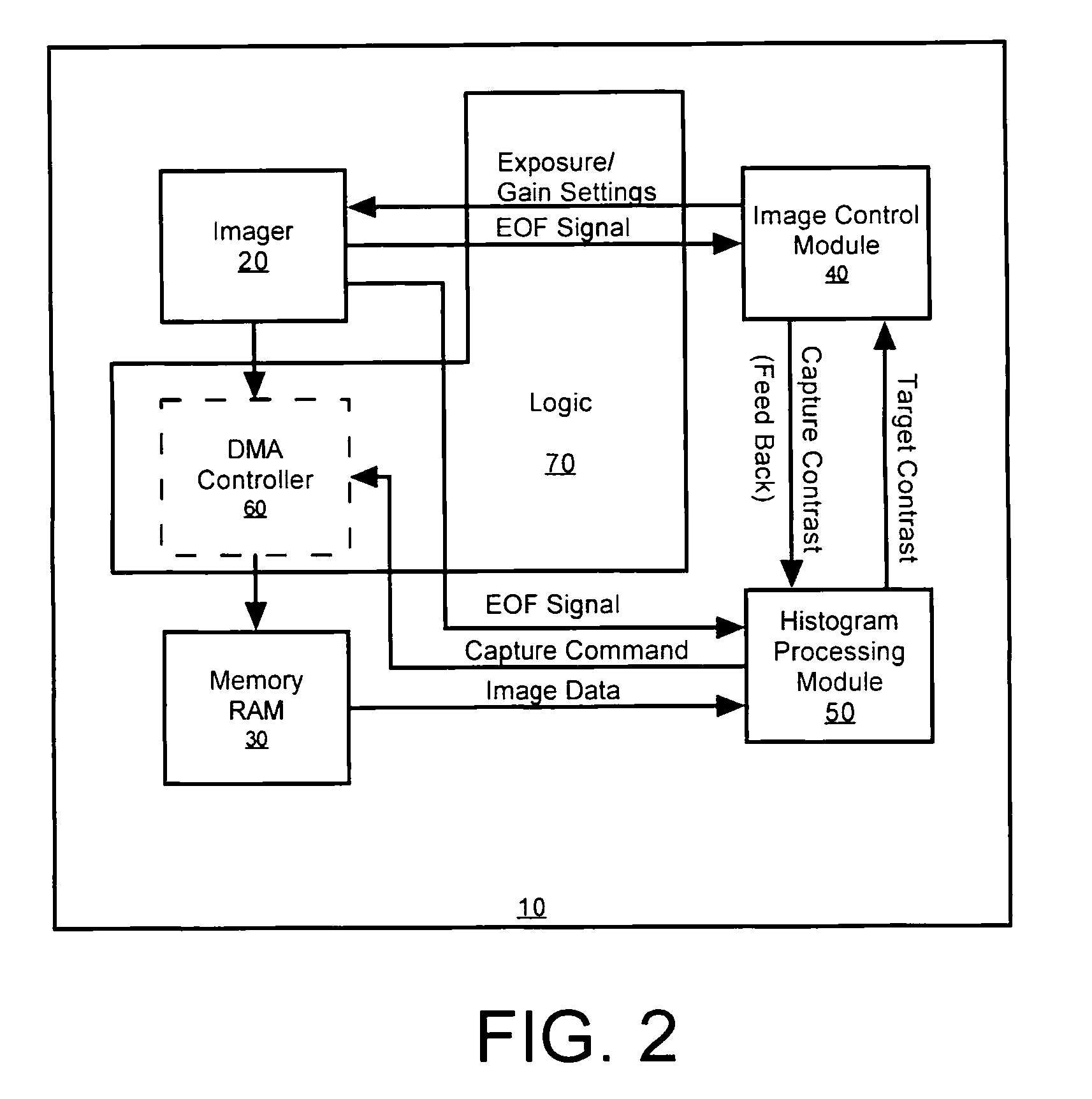Methods and apparatus for automatic exposure control
an automatic exposure control and portable technology, applied in the direction of exposure control, optical radiation measurement, instruments, etc., can solve the problems of slowing down the decoding process, increasing the demand on the device, and limited decoding algorithms in such devices
- Summary
- Abstract
- Description
- Claims
- Application Information
AI Technical Summary
Benefits of technology
Problems solved by technology
Method used
Image
Examples
Embodiment Construction
[0021]The present invention now will be described more fully hereinafter with reference to the accompanying drawings, in which preferred embodiments of the invention are shown. This invention may, however, be embodied in many different forms and should not be construed as limited to the embodiments set forth herein; rather, these embodiments are provided so that this disclosure will be thorough and complete, and will fully convey the scope of the invention to those skilled in the art. Like numbers refer to like elements throughout.
[0022]FIG. 1 is a block diagram that depicts the interaction between components in an imaging device incorporating automatic exposure control, in accordance with the present invention. The imaging device 10 comprises an imager 20, typically a camera that provides continuous image data to imaging device memory component 30, such as Random Access Memory (RAM). The imager will typically be capable of reading at least two-dimensional image symbologies, such as...
PUM
 Login to View More
Login to View More Abstract
Description
Claims
Application Information
 Login to View More
Login to View More - R&D
- Intellectual Property
- Life Sciences
- Materials
- Tech Scout
- Unparalleled Data Quality
- Higher Quality Content
- 60% Fewer Hallucinations
Browse by: Latest US Patents, China's latest patents, Technical Efficacy Thesaurus, Application Domain, Technology Topic, Popular Technical Reports.
© 2025 PatSnap. All rights reserved.Legal|Privacy policy|Modern Slavery Act Transparency Statement|Sitemap|About US| Contact US: help@patsnap.com



